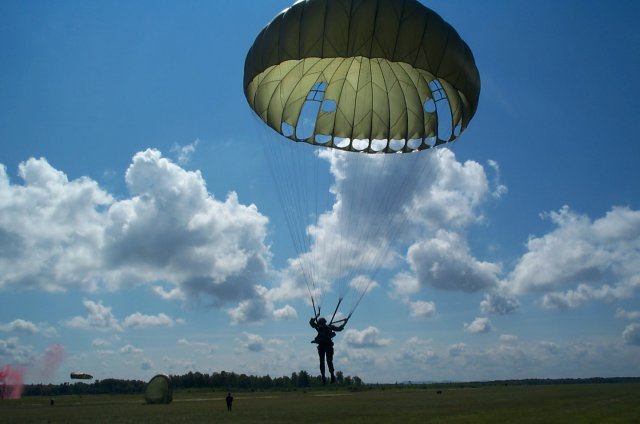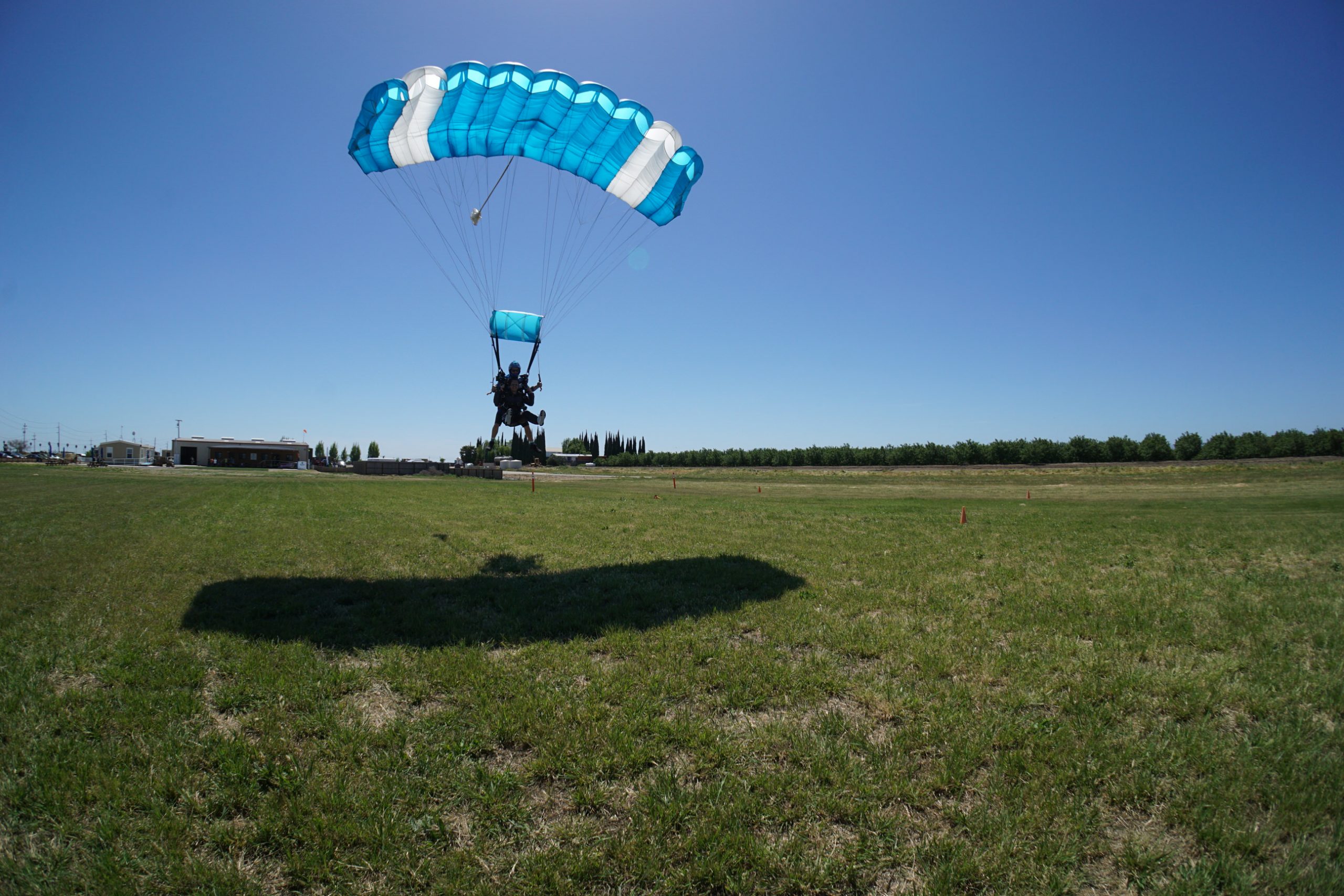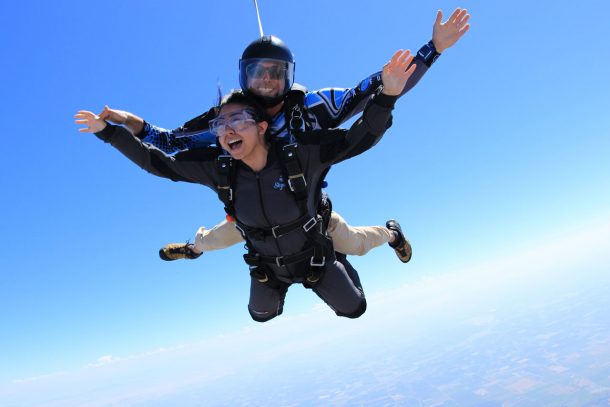What is a Parachute Landing Fall (PLF) & When Do You Need To Use It?
A parachute landing fall (PLF) is an important skill to have as a skydiver. Landing even today’s modern and highly controllable parachutes still has small risks associated in certain conditions. Having a way to manage those risks through a practiced ‘fall’ keeps us safer.
What is a parachute landing fall (PLF)?
To answer this question, we really need to go back to where it all began…
Back in the history of skydiving, everyone jumped with round parachutes. When compared to today’s modern equivalent, the risks on landing with a round parachute were far greater.
Skydivers using round parachutes have been unable to control their parachute like a ram-air (square) parachute. This meant that skydivers with round parachutes would often find themselves coming in to land with little control.
An added risk to round parachute pilots was that the rate of descent was hard to control, too. Whereas modern, square parachutes can be slowed down dramatically to allow for a nice, soft landing. Pilots of round parachutes had no such luxury and could only slow the parachute down the smallest amount.
Both of these things combined meant round parachutes resulted fairly regularly in the skydiver landing with a bit of a bump, shall we say! The parachute landing fall was invented as a way of taking the edge of this bump by giving skydivers a way to land that would cause them least harm.

Essentially, a parachute landing fall (PLF) is a sophisticated way to fall when coming in for a parachute landing that can’t be stood up safely. It’s should always be used when landing a round parachute. Sometimes pilots of ram-air parachutes need to perform a PLF is the landing is not anticipated to go well.
How to do a parachute landing fall (PLF)
The PLF is designed to help the skydiver minimize force impact when coming in for a landing. For example, a landing on the backside could result in reverberations up the spine and some nasty pain, if not worse, in that area. Landing incorrectly on the legs or ankles can result in bruising or breakage.
The PLF, therefore, encourages skydivers to land on the more hardy parts of the body, those which can take the impact with less risk. Think non-core, softer parts of the body found down both sides, including the flesh of the side of the buttocks and the upper arms.
To do a parachute landing fall, the skydiver simply rolls to their side as they touch down feet first. This allows the momentum to push them all the way over. It’s a simple thing that means most of the pressure of the landing is absorbed without affecting those higher risk areas.
When would you use a parachute landing fall?
While PLFs would be performed under a round parachute, there are also times when skydivers need to perform a PLF.
- When wind speeds on landing are lower and therefore the speed across the ground is increased, making it difficult to run the landing off
- In the event of a parachute issue that makes slowing the parachute’s rate of descent more difficult.
- When landing in an unfamiliar or difficult area outside of the usual parachute landing area (PLA). As in an off landing, (where the parachutist lands outside of the drop zone for any reason).
The reality is that most landings these days are soft and issue free. With the invention of square parachutes came the ability for skydivers to have greater control of their flight and landing. This slowed the rate of descent significantly, allowing for the soft touchdowns. You’ll see when you come to jump with us.

What do you think? Fancy learning how to use the parachute landing fall and lots more? Find out about learning to skydive with us, or get in touch with any questions and we’ll be happy to help.







